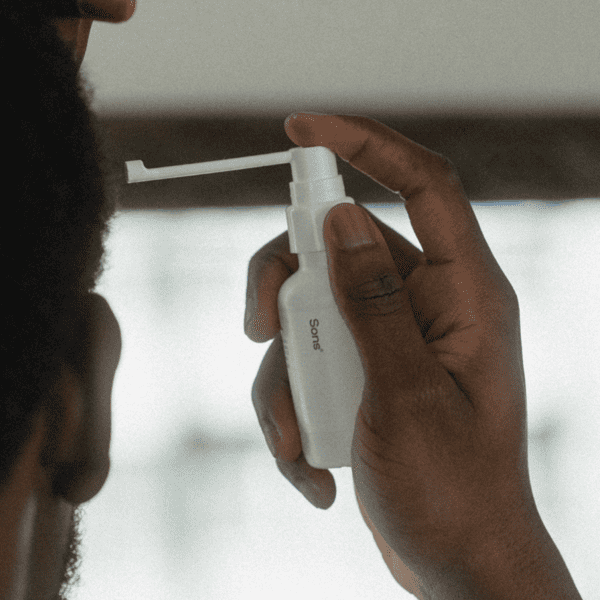
For many Irish men, hair loss often sneaks up quietly—a receding hairline here, a thinning crown there. Once it becomes apparent, it might seem like the battle is lost. However, due to cutting-edge, science-based solutions, this isn’t the case anymore. Modern treatments now exist to slow or even reverse the early signs of hair loss, particularly when addressed in time.
The pressing question is not whether to take action, but how to do so.
One frequent challenge men face is deciding between topical and oral treatments. Each has its merits, catering to different needs and working through distinct mechanisms. This article explores these treatment options, helping you decide what suits your hair loss stage and lifestyle best.
Foundational Knowledge
Before delving into the pros and cons of each treatment type, understanding their targets is crucial.
The predominant cause of hair loss among men is androgenetic alopecia, identified as male pattern baldness. This condition stems largely from a hormone known as DHT (dihydrotestosterone), which attaches to scalp receptors, causing hair follicles to gradually shrink. This leads to shorter, thinner hair, ultimately resulting in baldness.
Treatments usually aim to:
- Block or diminish DHT, or
- Boost blood flow and stimulate follicle activity to promote regrowth
Topical and oral treatments tackle the issue from varying perspectives.
Topical Treatments Explained
Topical hair loss treatments are applied directly to the scalp, typically as a spray, foam, or liquid. The most recognized is minoxidil, which enhances blood circulation to the scalp and revitalizes shrinking hair follicles.
Benefits of Topical Treatments
- Non-invasive and universally accessible
- Simple integration into daily grooming
- Supported by clinical trials and generally well-received
- Effective for early to moderate thinning, especially at the crown
Possible Downsides
- Needs twice-daily application for optimal results
- Might leave a greasy or sticky residue, depending on the formulation
- Potential for irritation in sensitive scalps
- Less effective for hairline recession compared to crown thinning
Insight into Oral Treatments
Oral hair loss treatments are administered as tablets, taken once daily. These work systemically, circulating throughout the body to address hair loss internally.
These are often preferred by those who desire a less-maintenance regimen or haven’t seen results with topical solutions.
Advantages of Oral Treatments
- Convenient and discreet (just one pill per day)
- Tackles the hormonal root cause of male pattern baldness
- Can preserve existing hair more effectively than topicals alone
Potential Downsides
- Possible hormonal side effects for a small subset of users
- Requires ongoing commitment to maintain results
- Not recommended for those with certain pre-existing conditions
Finding the Right Solution
The reality is, there’s no one-size-fits-all solution. It largely depends on your genetics, the extent of your hair loss, comfort level, and treatment goals. Many men find the best results come from combining treatments—a topical to activate follicles and an oral to manage hormonal triggers.
The synergy often yields superior hair retention and regrowth compared to using either method in isolation.
For those in Ireland feeling uncertain, platforms like Sons provide access to expert consultations and personalized treatment plans. These services simplify obtaining professional advice and approved treatments without the delays or discomfort of face-to-face meetings.
Timeframe for Visible Results
Regardless of whether you opt for topical, oral, or both, patience is necessary.
Hair growth is a gradual process. Most men notice initial improvements between three to six months, such as reduced shedding and better density. Full visible results might take up to a year, and consistency is vital.
Ceasing treatment will likely reverse any gains, as follicles revert to their pre-treatment state. Consider it akin to a fitness routine for your scalp—once you stop, the benefits diminish.
Realistic Expectations Are Key
Many men hope for a full head of thick hair within weeks of starting a product, but that’s not typically how hair loss treatments operate. The primary aim is maintaining and enhancing existing hair, not complete reversal.
Success is generally defined as:
- Slowing or halting further loss
- Thickening existing hairs
- Regrowing density in active follicles
By aligning your expectations with medical realities, you’re more likely to remain committed and achieve lasting improvements.
Nurturing Hair Health Internally
Regardless of your chosen treatment, supporting your hair from within can enhance results. Consider these lifestyle tips:
- Consume a diet rich in iron, zinc, and biotin
- Maintain regular exercise to boost blood circulation
- Avoid tight hats or hairstyles that exert pressure on the scalp
- Reduce chronic stress, which can expedite shedding
- Stay well-hydrated and ensure adequate sleep
These habits won’t reverse male pattern baldness alone, but they bolster your follicles and complement any treatment strategy.
Final Thoughts: Your Personalized Path
Hair loss is an individual journey—and so is finding the right solution. What works for one person might not suit another. The best approach is to start early, consult with professionals, and be realistic about your commitment.
Topical treatments like minoxidil provide an excellent starting point—particularly if your hair is just starting to thin. Oral alternatives may offer more substantial hormonal support. Combining both could yield the most comprehensive results.
With services like Sons, initiating your journey is simpler than ever—delivering discreet, clinically-informed guidance to Irish men ready to reclaim their hair’s future.
Because when it comes to combating hair loss, inaction rarely leads to improvement. But taking proactive steps? That’s where transformation begins.